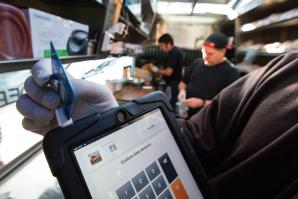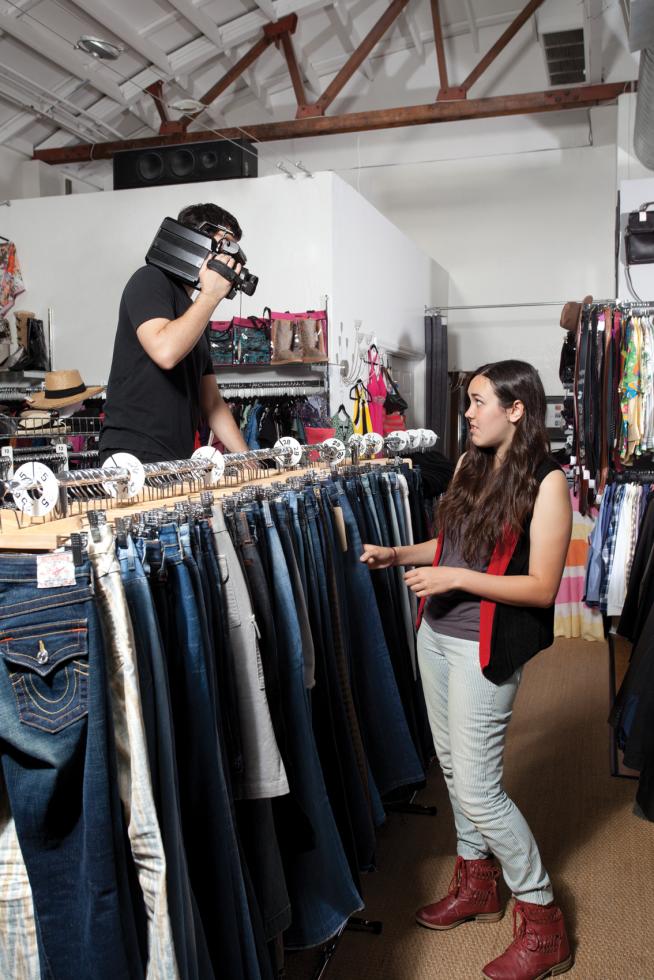The scene was right out of a TV cop drama. Shots rang out. A crowd ducked for cover. The bad guys sped off in a getaway car. The incident in a Sacramento shopping mall last year was real life. But just like on television, the case was wrapped up in three hours, with the bad guys in jail and the car impounded.
A state-of-the-art security system had caught their every move on camera. It not only recorded the license plate number of the getaway car, but could pinpoint its parking space.
“Everyone who comes here leaves a visual footprint,” says Steve Reed, security chief for Arden Fair Mall. “As they were driving away, we already knew what they looked like and where they had been and had the license plate number of the car.” The plate number was immediately passed on to Sacramento police, who chased the criminals down.
The basic tools for security personnel seem obvious. They might include a radio, handcuffs and maybe a baton. But more security staffs are likely to be armed with unseen weapons. High-tech tools, including cameras coupled with sophisticated face recognition software and space-age optics, computers that can crunch data by the megabyte and sensors that can record the flight of a falling leaf, record massive amounts of data and images that track where people go and what they do. This is security from hundreds of eyes that see all, day and night.
Companies and government agencies spend an estimated $315 billion a year to safeguard their customers, inventory, new product designs, and proprietary and confidential data. Equipment purchases alone were estimated at $39 billion last year, up from $12 billion 20 years ago, reflecting both a greater sensitivity to security in the post-9/11 environment and the climbing price tag for the latest digital technology.
“Twenty years ago, security was a guard at the gate,” says Connie Vaughn of Eyeview 24, a security system designer in El Dorado County. “Now, security personnel need to know how to access computers and analyze data.” The data, she says, reveals potential trouble or soft spots in company operations or data management systems that protect against identity theft, inventory loss or misbehaving crowds.
Building an effective security system is not cheap or easy, says Basil Steele, vice-president of physical security for TSE Corp. of El Dorado Hills. Steele has designed systems to protect weapons for the Department of Defense and research secrets for the Department of Energy. “When I consult with a customer, I wait until they are done telling me what cameras they want, and then I ask them, ‘What they are trying to accomplish?’” he says. “They are either trying to prevent someone from getting hurt or stealing something.”
At Mercy General Hospital in East Sacramento, safety takes maximum priority. “People come here to have a baby or because they are sick, and all of those are anxious moments,” says Russell Malcolm, the hospital’s security chief. “If people don’t feel safe, they won’t want to come here or work here.”
Using a simple desktop computer in his office, Malcolm can lock or unlock any door in the rapidly expanding hospital, a task that would take a worker almost half an hour. “That guy could be free to escort a visitor to the parking garage instead of locking down doors,” says Malcolm. “Which do you think is more advantageous to the organization?”
The computer system also allows Malcolm to set up programs that identify every person who goes through a door and alert him if an unauthorized person tries to enter a room. Electronic tags identify newborns and their new parents to make sure everyone is properly matched up when they go home.
Still, Malcolm relies on a clear eye in the sky to keep track of what’s going on. “Changes in camera technology are amazing,” he says. It wasn’t that long ago that he relied on crude cameras with VHS tapes image quality as snowy as the picture on a busted TV. “Now, the clarity is amazing, and it’s about 100 times better.”
More important for security, his IP-based system can record and retain terabytes of images for weeks at a time through a combination of wireless and cable connections to a server in the hospital. “If you need to see what happened on a specific date at a specific time, I can find it with the push of a button,” he says. “If I have an incident that has to go to [the legal department], I want to put the best possible product out there.”
Like any business expense, evaluating return on investment is important for security systems. Malcolm believes the value is a no-brainer. “If we prevent an incident that saves us from a lawsuit, then $100,000 can save a million dollars,” he says. “Any investment broker will tell you that’s a smart move.”
After investing $2 million in cameras, Steve Reed from Arden Fair would agree. Reed, a 20-year veteran of the Sacramento Police Department, has 192 cameras and more on the way to cover every inch of the 77-acre mall, a far cry from the 19 cameras in place when he arrived. Instead of VHS tapes that need to be changed every day, the current system stores up to 190 terabytes of data for up to 40 days on 6 servers. “My assistant has so much computer equipment in his office that we had to add more air conditioning,” he says.
In addition, two security vehicles equipped with license plate readers troll the parking lot. The cameras, which range from 2 to 29 megapixels, were paid for with Homeland Security grants and can read a plate every second. “The integrity of the images is amazing,” Reed says. “It’s like looking through a window.” The system is connected to a Sacramento Police Department database and downloads information on a separate screen when it gets a hit on a stolen car.
The cameras and reader system are reducing crime, helping customers feel safe and reversing a former image of the mall as a crime magnet. Car thefts, once common, are now rare. There have been five so far this year and a dozen in 2012, compared to 77 in 2007 before security was beefed up.
Indirectly, that kind of security boosts profits for Arden Fair’s vendors by discouraging criminal behavior and inventory losses from theft. For example, a man parked a stolen car in a disabled zone. When he returned to the car, a pat-down revealed several pairs of shoes he had lifted from a nearby store. “Eighty-five percent of car thieves are involved in other criminal activity,” Reed says.
Reed can also monitor foot traffic in the mall to direct where he assigns his staff. Every entrance is equipped with a reader that counts people going through the doors. And if any of the 10 million visitors a year forgets where they parked their car, Reed has a technical solution for that as well.
If the lost shopper knows his license plate number, Reed can plug it into the reader system and the GPS system will display the car’s parking space in an instant.
Recommended For You
Encryptionite
A simple step can hinder thieves
Last year, 2.5 million Californians were victims of security breaches that revealed their personal information to unauthorized people, according to the state Attorney General.
More dramatic than the number of people victimized is the conclusion that 1.4 million of those people would have been protected if merchants and businesses had taken the simple step to encrypt the data, inserting a digital key that locks access to information as it is transmitted.

Swiped
Is mobile point-of-sale technology right for your small business?
On a drizzly afternoon in downtown Sacramento, Drewski’s Hot Rod Kitchen is hard to miss.



